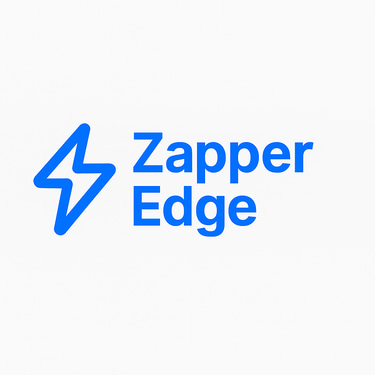Eliminating Disk-Exhaustion for SFTP — Azure Blob Scale-Out with Tiered Storage Cost Savings
The problem
Organizations often deploy SFTP servers on VMs or physical hosts to ingest partner files and operate file-based workflows. Over time these systems hit a predictable bottleneck: disk exhaustion. When the server disk fills up, file transfers fail, downstream processing stalls, SLAs break, and teams scramble to free space or resize volumes. The operational consequences are severe: lost productivity, missed delivery commitments, emergency maintenance windows, and repeated capacity planning cycles that consume operational resources.
Key pain points:
Recurring "disk full" incidents that halt business-critical workflows,
Manual, disruptive disk upgrades or emergency clean-ups,
Brittle capacity planning and wasted ops cycles, and
Impact to SLAs and customer commitments when transfers fail.
The ZapperEdge solution
ZapperEdge removes the single-point-of-failure by decoupling file transfer endpoints from persistent storage and routing SFTP traffic directly to Azure Blob Storage. By leveraging object storage elasticity and platform-managed scaling, ZapperEdge prevents disk-exhaustion events and enables continuous file ingestion without ad-hoc disk management.
Core capabilities delivered:
SFTP-to-Blob gateway — accepts SFTP transfers and writes directly to Azure Blob, avoiding local disk buffering.
Elastic, virtually unlimited storage — uses Azure Blob's scale characteristics so capacity constraints on a single VM are no longer a failure mode.
Decoupled compute & storage — compute (SFTP gateway) can scale independently of storage capacity, enabling high throughput without disk constraints.
Lifecycle & tiering policies — native support for Hot/Cool/Archive lifecycle rules to optimize cost and retention.
Observability & alerts — proactive monitoring for throughput, failed transfers and latency, plus automated retries and SLA-aware routing.
High-availability & fault tolerance — multi-instance gateway deployment patterns to ensure uninterrupted transfer even during maintenance.
Implementation (high level)
Deploy ZapperEdge SFTP gateway instances fronting customer endpoints; configure authentication and RBAC.
Connect gateway to the customer's Azure Storage Account (Blob) with secure credentials and network controls.
Route incoming files directly to Blob containers; apply naming conventions, partitioning and metadata.
Configure lifecycle policies and tiering to manage cost and retention automatically.
Enable monitoring, alerts and retention/reporting to surface any transfer anomalies and SLA breaches.
Optionally implement autoscale for gateway compute to match peak throughput.
Business & technical outcomes
No more disk-full outages: removing local disk dependency eliminates a common source of transfer failures and work stoppages.
Continuous ingestion & predictable SLAs: transfers complete reliably even under sustained or spiky load, protecting downstream commitments.
Reduced operational overhead: eliminates frequent manual disk resizing, emergency cleanups, and firefighting by infrastructure teams.
Cost-optimized storage: native Azure Blob tiering and lifecycle policies reduce long-term storage costs while keeping hot data accessible.
Scalable throughput: decoupled architecture supports higher concurrent SFTP sessions and bulk ingestion without per-server capacity limits.
Simplified capacity planning: storage becomes effectively elastic — teams focus on performance and SLAs rather than raw disk sizing.
Why Azure partners and enterprise customers should care?
Azure-native: aligns with Azure Storage, VNet/private endpoints, and Azure security controls for easy integration into Microsoft-centric estates.
Operational resiliency: turns a disruptive operational problem (disk exhaustion) into a solved, platform-level behavior.
Faster time-to-value: minimal infra changes — no more wasted cycles resizing volumes; instead, enable continuous transfer and processing.
Cost & governance: combine Blob tiering with ZapperEdge lifecycle rules for compliant, cost-effective retention policies.
Connect
Secure file transfers made simple.
Support@zapperedge.com
© 2025. All rights reserved.
